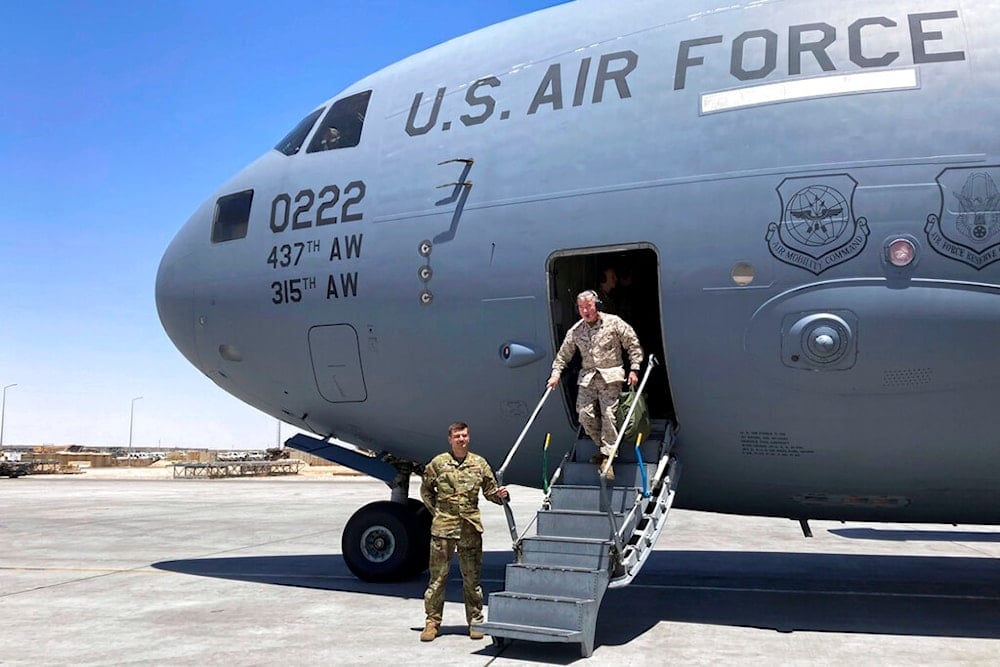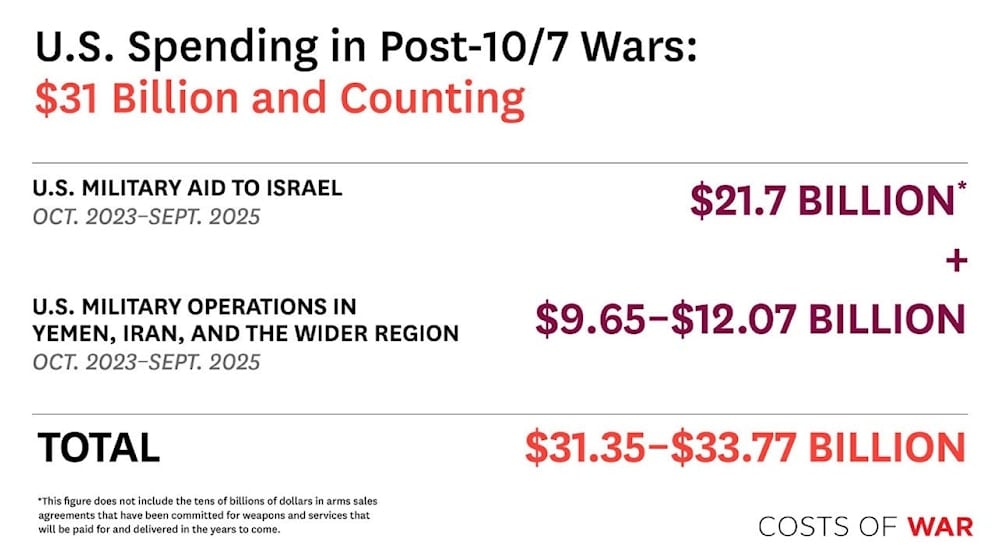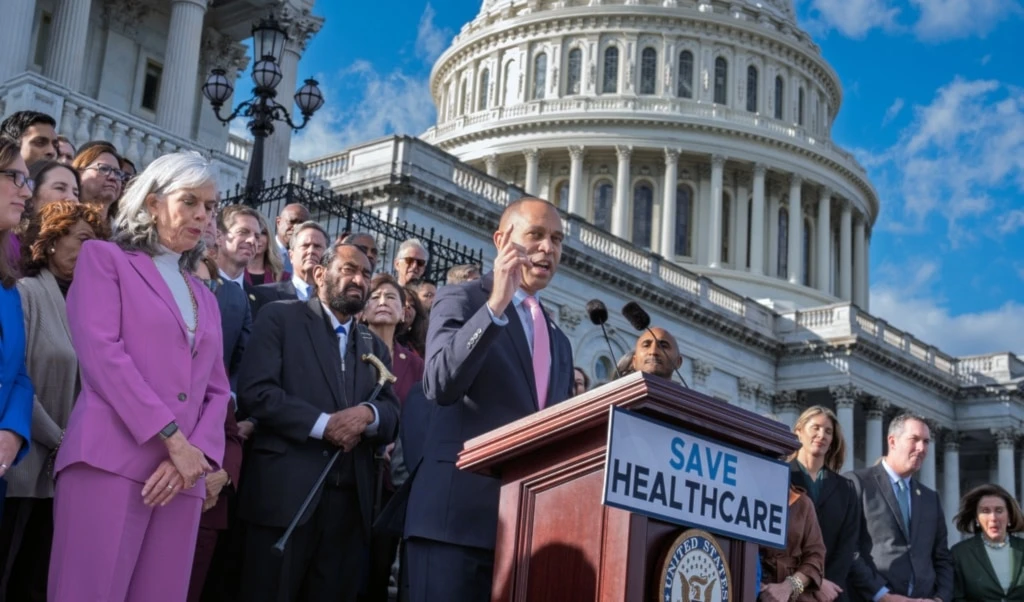US spent $33 billion on post-Oct.7 genocide, wars, Brown Uni reports
Brown University’s Watson Institute says US spending on wars since Oct. 7 totals over $33 billion, with 236,000 Gaza casualties and 5 million displaced.
-

In this May 20, 20201, photo Marine Gen. Frank McKenzie, the head of US Central Command, arrives in Baghdad, Iraq (AP)
The United States has spent between $31.35 and $33.77 billion on military operations and aid related to the wars that have unfolded since October 7, 2023, according to a new report by Brown University’s Watson Institute for International and Public Affairs.
The study, part of the university’s long-running Costs of War project, found that $21.7 billion in US funding went to military aid for the Israeli occupation over the past two years, while an additional $9.65–$12.07 billion was spent on US operations in Yemen and the wider region.
The report cites data from the Gaza Ministry of Health showing that, as of October 3, 2025, 67,075 people in Gaza have been killed and 169,430 injured since the war began, a combined total of 236,505 casualties, representing more than 10% of the enclave’s pre-war population.
At least 5.27 million people across Gaza, Iran, the Israeli occupation, Lebanon, and the West Bank have been displaced or forced from their homes since October 2023, including an estimated 1.85 million children under the age of 18.
Economic, social tolls of militarism
The report highlights that every $1 million in US military spending creates about 5 jobs, while the same investment could generate nearly 13 jobs in education, 9 in healthcare, or 7-8 in infrastructure and clean energy.
Between 2020 and 2024, private contractors received $2.4 trillion in Pentagon contracts — about 54% of the War Department’s $4.4 trillion discretionary budget.
-

Figures by Brown University’s Watson Institute for International and Public Affairs about US military spending (Cost of War)
The study points to the arms industry’s extensive political influence, citing lobbying, campaign contributions, the “revolving door” between government and defense firms, and funding for think tanks and advisory committees.
Gender violence, tech militarization, and climate impact
The report also draws attention to broader systemic issues within the US defense apparatus. During the war in Afghanistan (2001–2021), 24% of women service members and 1.9% of men reported experiencing sexual assault.
It warns of the growing ties between the military-industrial complex and Silicon Valley, as a rising share of Pentagon spending flows to major tech corporations. Additionally, the US War Department remains one of the world’s top greenhouse gas emitters, linking war directly to climate change.
The report concludes that Americans are “inundated with cultural products that promote militarism,” from films to sporting events, which “normalize war and reduce reflection about US policy choices and their consequences.”
Army not to receive pay
US House Speaker Mike Johnson warned on Tuesday that active-duty military personnel will not receive their paychecks on October 15 unless Congress passes a government spending bill by October 13 to end the ongoing shutdown.
“Checks to our troops will be held up on October 15 if they [Democrats] do not come in tomorrow and vote to reopen the government,” Johnson told reporters. “You have to get it resolved by October 13 to process those checks.”
The US government has now been shut down for seven days, following a deadlock between Democrats and Republicans over a temporary funding bill. The impasse has left 1.3 million active-duty troops and 50,000 Coast Guard members without pay.
In addition, over 13,000 air traffic controllers face disruptions, threatening flight operations, while food assistance for low-income families has been cut. The Congressional Budget Office estimates that roughly 750,000 federal workers may be furloughed daily, costing the US government $400 million per day.

 4 Min Read
4 Min Read










